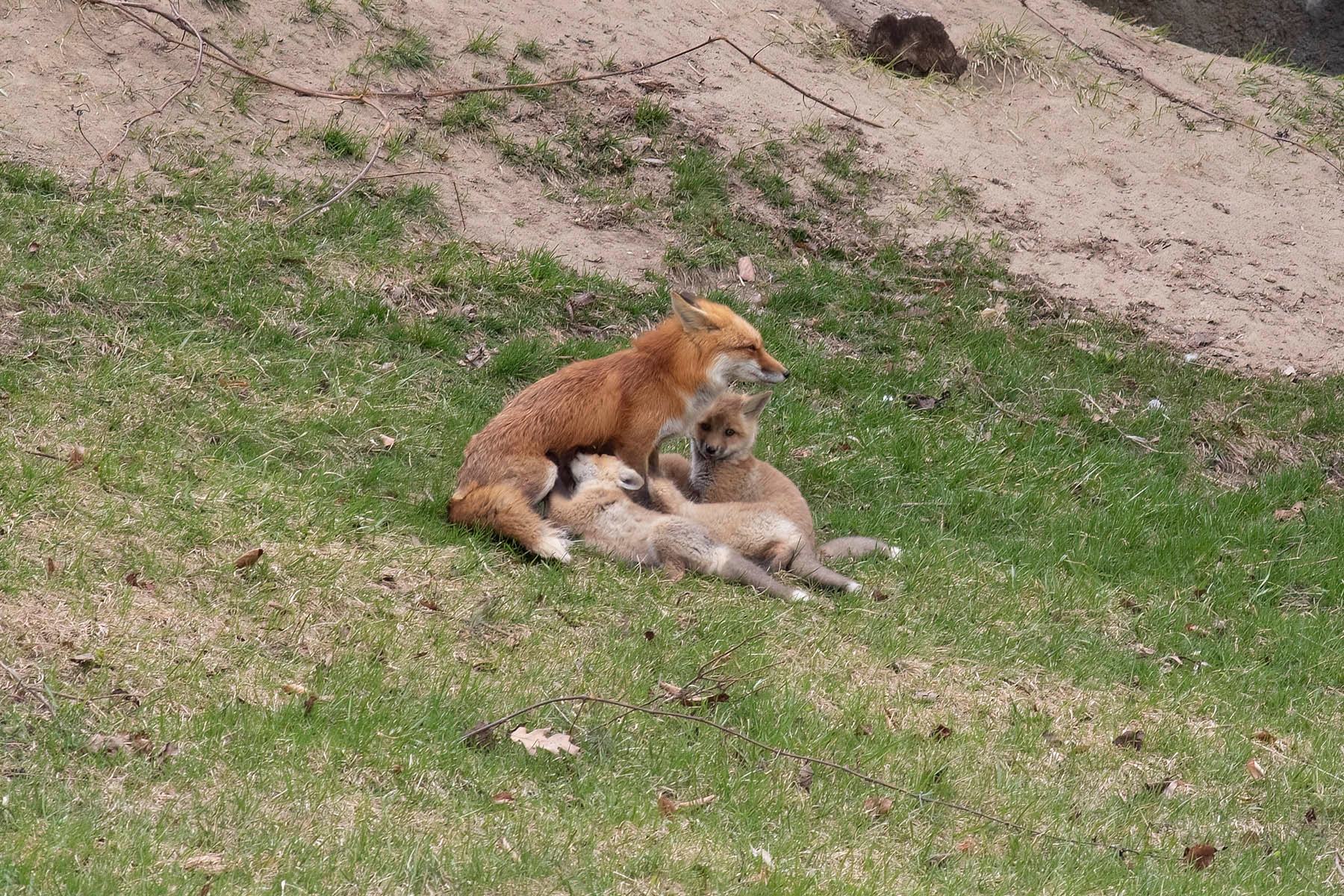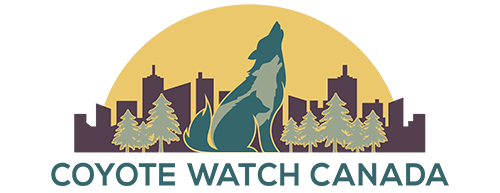
We receive reports of wild canids in need of help all year long, but our ability to intervene can be greatly impacted during the spring and summer months. Here’s why: In late winter, wild canids are preparing to have families. In January/February, females may be pregnant. By March/April, babies are arriving.
Foxes and coyotes mate for life when left to thrive, and they co-parent their young. Babies depend on both parents for food, protection, and important life lessons about how to survive and thrive in a very dangerous world. Survival readiness is a months-long process. This is why we are cautious about removing canids from the landscape during the spring and summer months. Once coyote and fox young are weaned and if one of their parents for some reason dies, the remaining parent is capable of caring for their young family. It is always best to leave wild families together even under these scenarios.When we receive reports about canids in trouble, we try to remember that there is a unique story behind each animal. There may very well be an entire family depending on that animal. There may be babies waiting for their mother to return so they can nurse, or a tired nursing mother waiting for her partner to bring food to nourish her while she nourishes their young. It is difficult for us to see animals in trouble. Our team grapples with a reflexive urge to jump in and help. But it’s important that we step back and ask ourselves how we can best serve each animal. Every case requires careful assessment and sometimes a challenging amount of patience.
We work with some of Ontario’s most reputable rehabilitators and veterinarians to evaluate the urgency of each animal’s condition, and we plan accordingly. Some animals require urgent, life-saving medical care. Others may be best helped when humans step back, allow families to remain intact, and monitor from a distance. We call this “mindful monitoring.” We consider mindful monitoring cases to be active cases. In these instances, we rely on our engaged animal welfare agency partners and members of the public – our community champions – to provide regular sighting reports to our team so we can track the animal’s condition and pivot our approach if needed.
Wildlife rescue and rehabilitation require us to respect the needs and wildness of the animals we aim to help. This is not always an easy process. Knowing when to intervene vs. when to quietly observe sometimes requires a great deal of knowledge and experience. And these decisions are not made lightly, nor are they always easy for us to sit with. But wildlife deserves our respect, and we want to do our best to balance their wild needs with our desire to help. Gaining insight from a situation may also rely on non-intrusive "distance monitoring" by employing the use of trail cams as well.
If you’re concerned about a canid, you can file a report with us here: https://www.coyotewatchcanada.com/site/report Details make a difference: please provide photos or video, if possible – these can help our team evaluate cases much more quickly.
Red fox and kits photo copyright Ann Brokelman for Coyote Watch Canada

